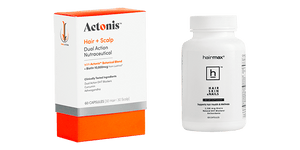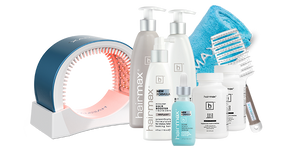In choosing a medical device when you are going bald, it is important to learn all there is about the clinical trials that have been conducted that prove the effectiveness for these devices. Most of the manufacturers of laser devices on the market for people going bald, have not conducted clinical trials under strict FDA guidelines to prove both safety AND efficacy.

Lexington Int’l has conducted 6 clinical studies with almost 460 subjects that have consistently proven the efficacy AND safety of the HairMax LaserCombs for treating people going bald. All of these clinical studies conducted under GCP (Good Clinical Practices) guidelines. GCP’s are specific, detailed, and rigid guidelines issued by the FDA for conduction of clinical studies. For the HairMax LaserComb for treating people going bald, Lexington had to submit a GCP study proving not only the efficacy, but also safety. When the FDA granted FDA Clearance for the HairMax, the FDA carefully reviewed clinical study results submitted, for effectiveness and safety.
So let’s go into each aspect of GCP clinical studies that are required, for people going bald, which are conducted under the ‘umbrella’ of, Good Clinical Practices to prove effectiveness and safety.
- Site Location– Clinical studies should be conducted at a number of centers of research to assure that results are consistent for people going bald. If only one center was used, it would not prove that the results will be predictable wherever it is used. The HairMax clinical studies were always conducted at many centers, not just one like some other devices. This means that the results are were proven to be consistent and predictable.
- Double-Blind, Placebo Controlled – It is vital that a clinical study to prove effectiveness in people going bald with a medical device, be tested against an inactive device. Further, it is vital that it be ‘double blind’, in that both the researcher conducting the study AND the subject not know which device they are using. This eliminates any biases that could occur if anyone knew the identity of the device and might give the active device to certain subjects going bald and not to others. All HairMax LaserComb clinical studies for people going bald were double-blind, placebo controlled.
- Random Selection – A clinical trial for people going bald, has to have a mathematical randomization plan to assure the random nature of the active and placebo devices to subjects. This was the foundation of all HairMax LaserComb clinical studies for people going bald to eliminated bias at any center as far as distribution of the active and placebo device.
- Subject Selection – Every single person going bald in the studies has to be selected under detailed and definitive guidelines, which allow for characterization of the subjects’ condition and any other drugs they may be taking. This assures that each center selects the same type of subject and there is no bias in selection of people going bald at one center over another.
- Objective Results – The results of clinical studies for people going bald, have to be measured against results that can be measured uniformly amongst all study sites. Thus, the HairMax LaserComb clinical studies for people going bald, measured hair counts before, during and after the trials. This completely eliminates all bias as photo-macrographs used to film hair growth, either shows ‘no growth’ or ‘hair growth’. All of the HairMax LaserComb clinical studies showed that over 90% of people going bald experienced hair growth in all of the clinical trials, compared to minimal results with the placebo device.
- Evaluation and Reporting of Results – As pointed out under, all trials conducted in double-blind, placebo controlled manner for people going bald, must have the results of the clinical trials evaluated in a blinded manner. That is, the evaluators cannot know which device was the active and which device was the placebo to assure there is no bias as far as stating results. Obviously, if an evaluator knew which device was active, better results could be skewed towards that device. All of the HairMax LaserComb clinical studies for people going bald, were strictly evaluated in a ‘blinded’ manner.
In conclusion, while there are a number of laser phototherapy devices on the market claiming effectiveness for people going bald, NONE OF THEM have conducted multiple clinical trials to prove efficacy and safety. Further, only the HairMax LaserComb has published the results of a clinical trial proving the effectiveness of the device for people going bald.
That is why, when you make the very important decision as to which product to buy when you are going bald, make sure the device you are considering, was studied as outlined above under strict GCP guidelines. You will find that the HairMax LaserComb is the only device of its kind that meets every single criteria listed above in multiple clinical trials for people going bald so you can be confident that you are purchasing a device that has been proven to work – over and over again.










